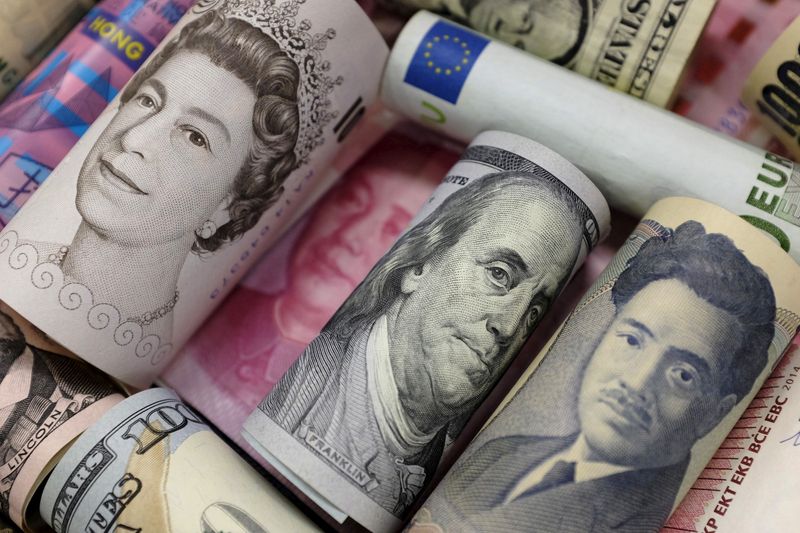By Gertrude Chavez-Dreyfuss
NEW YORK (Reuters) -The dollar surged to a fresh two-decade high on Wednesday after the Federal Reserve raised interest rates by another 75 basis points and signalled more large increases at its upcoming meetings.
Dollar gains were limited since the Fed decision was widely expected. Still, since U.S. rates will be higher for longer, the trend remains dollar-supportive for some time, analysts said.
The Fed’s new projections showed its policy rate rising to 4.4% by the end of the year, before peaking at 4.6% in 2023 to curb uncomfortably high inflation. Rate cuts are not expected until 2024.
Fed Chair Jerome Powell, in his press briefing, said there is no painless way to bring inflation down, reiterating that it wants to act aggressively now and keep at it. He added that the Fed’s actions are likely to result in slower growth and higher unemployment.
The dollar index hit a fresh 20-year high of 111.63 in the aftermath of the Fed rate hike, and was last up 0.7% at 110.97.
“We expect the U.S. dollar to remain firm in the short run but we remain reluctant to factor in additional, sustained U.S. dollar gains from here and we think it would be complacent to dismiss out of hand downside risks here,” said Shaun Osborne, chief FX strategist, at Scotiabank in Toronto.
He said that the dollar has become significantly overvalued. Since the beginning of the year, the dollar index has soared nearly 16%, the largest yearly percentage gain since at least 1972, when Refinitiv started the data series.
Osborne also said higher U.S. rate expectations have already been priced in the dollar, with the peak fed funds rate, or the U.S. central bank’s policy rate, having advanced by more than 100 bps since August.
The euro, the largest component in the dollar index, dropped to a 20-year low, hitting $0.9810. Europe’s single currency last changed hands at $0.9852, down 1.2%.
Against the yen, the dollar posted minor gains compared to other currencies, rising as high as 144.695 yen. The greenback last traded at 143.98 yen, up 0.2% on the day. Traders remained wary of pushing the dollar higher given the threat of Japan intervention to boost the yen.
“They (the Fed) have a brief window to act aggressively, and they seem eager to use it,” said Jan Szilagyi, co-founder and CEO of Toggle AI, an investment research firm.
“There is another reason to frontload the hikes. Public and market tolerance for tighter monetary policy is far higher with the unemployment rate below 4%, a historic low.”
Sterling fell to a new 37-year low of $1.1237 and last traded at $1.1272, down nearly 1%.
Earlier in the session, the dollar posted gains after a decision by Russian President Vladimir Putin to mobilize more troops for the conflict in Ukraine.
Putin on Wednesday called up 300,000 reservists to fight in Ukraine and said Moscow would respond with the might of all its vast arsenal if the West pursued what he called its “nuclear blackmail” over the conflict there.
European currencies bore the brunt of selling in foreign exchange markets as Putin’s comments exacerbated concern about the economic outlook for a region already hit hard by Russia’s squeeze on gas supplies to Europe.
Osborne noted that elevated geopolitical risks have underpinned the dollar as a safe haven and alternatives are scarce in the developed world.
“We think the time is coming for a U.S. dollar correction but dollar bears will have to remain patient for a little longer,” he said.



